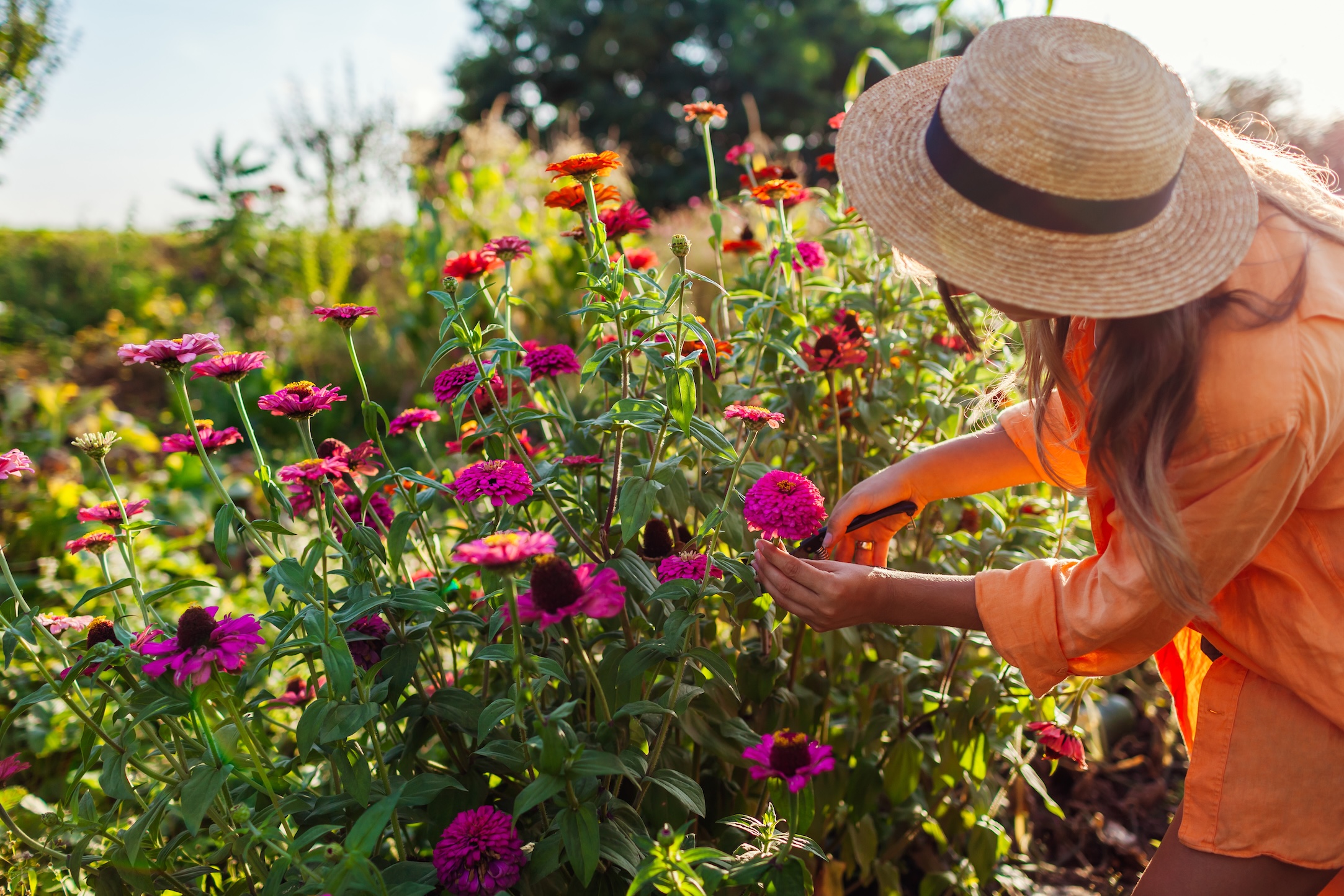Late Summer Maintenance Tips for Your Garden
Deep into the summer, you may be sitting back and enjoying the harvest that your garden has provided for you. However, there's always work to be done in the garden. Staying on top of maintenance and preparation for the next season can be beneficial and will help you get the most out of your garden for as long as possible.

The dog days of August yield many hours to indulge your senses and enjoy the fruits of your labor in your garden. It’s a time to savor those luscious, fresh-from-the-vine tomatoes, share your rapidly multiplying zucchini with the neighborhood, and to spend lazy days sitting among the butterflies and bees in your flower garden.
While the days may be carefree, there’s still a little bit of garden maintenance to be done. We’ve compiled some handy tips and tricks for you, along with some helpful hints to make the tasks easier.
In the flower garden
For roses, continue to deadhead faded blooms, cutting back the entire stem after all the blooms are spent. Remove any suckers at the base of the bush. Discontinue any fertilization of your plants. This will reduce late season growth that can be damaged by cold and winter snow.
Perennials, like annuals, should not be fertilized in August to avoid late-season growth. Look for powdery mildew on plants like garden phlox and bee balm. It usually makes plants look like they have been sprinkled with baby powder. If possible, move any infected plants to an area with more sun or better circulation.
Deadheading (removing the spent flower heads) will prevent reseeding of flowers, as well as encourage more blooming and keep the garden looking neat. A scissors will work just fine for the task, but consider using a pruner for both delicate flowers and shrubs. Don’t prune small shrubs like Russian sage or butterfly bushes. By not cutting them back now, they’ll be hardier and better suited to withstand the winter. Get rid of dead and diseased plants and cut back the ones that seem to be fading. Divide clumps of overgrown spring-blooming plants. If you have irises, now is the time to divide them. Cut back the leaves to a height of 6 inches. After digging out the rhizomes, inspect them for borers, removing damaged and infected pieces. Plant where desired with the rhizomes just below the soil surface. Daylily clumps should also be divided, once blooming has ceased for the season.
Think ahead to your spring-blooming garden. For the best selection of spring blooms, now is the time to shop for bulbs for fall-planting. Make note of the spaces in your flower beds where you will have room to add some bulbs.
Annual flowers should be deadheaded to ensure continual blooming. Check for powdery mildew and thin out and remove diseased plants to increase airflow. Take cuttings from your favorite plants and start them in soil to spend the winter indoors. Geraniums, coleus and begonias are good candidates to grow inside. Outdoors, add cool weather plants, such as pansy, mums, asters and flowering kale to extend your blooming season as the weather cools.
In the vegetable garden
Be vigilant about any weeds growing in and around the perimeter of your garden. Keep them from going to seed and becoming a bigger nuisance next season. Remove any visible pests and destroy them. Be sure not to let your crops get too ripe. Beetles can be attracted to damaged or overripe fruits and vegetables. For aphids and other pests, an application of insecticidal soap will help.
Replace early-season crops and plant fall vegetables such as kale, radishes, lettuce and spinach in the freed-up garden space.
Keep your plants well watered. Remember to give them the equivalent of an inch a week if rainfall is not sufficient. Try saving the water collected in your dehumidifier bucket for watering plants. It’s chlorine and chemical-free and will help save on your water bill.
Plants grown in containers will benefit from an application of diluted fertilizer.
Check the lower parts of your tomato plants for brown spots or yellowing. These are signs of early blight, leaf spot or other diseases. Remove infected leaves and discard them (do not add to the compost pile to avoid spreading the disease).
Vine crops, such as melons and pumpkins, may rot if the ground is too wet beneath them. Keep them dry by sliding a patio block or a few bricks underneath the fruit. If mildew is showing up on the vines, remove infected leaves as they appear and train growing vines on trellises to improve air circulation and exposure to sunlight.
When harvesting your vegetables, consider the time of day. Gather leafy vegetables and herbs early in the morning while still dew-covered. Harvest other crops as close to meal preparation time as possible. Store those not used in plastic bags or covered containers in the refrigerator. If freezing or canning, harvest just before preparation to ensure the best results.
In the lawn
Be sure not to cut your grass too short in hot weather. If grass goes dormant in drought-like temperatures, it will bounce back once rains return. The later part of August, when the weather cools, is the best time to seed or repair a lawn. Do not fertilize now, wait until later in the fall.
Yellow jackets are particularly active in August. Don’t let them ruin your outdoor activities. A few yellow jacket traps will lure them away from your patio or picnic area.
This easy checklist summarizes August garden chores:
- Water
- Deadhead
- Weed
- Monitor pest and disease problems
- Divide and take cuttings
- Relax, and enjoy the glorious days of late summer!












